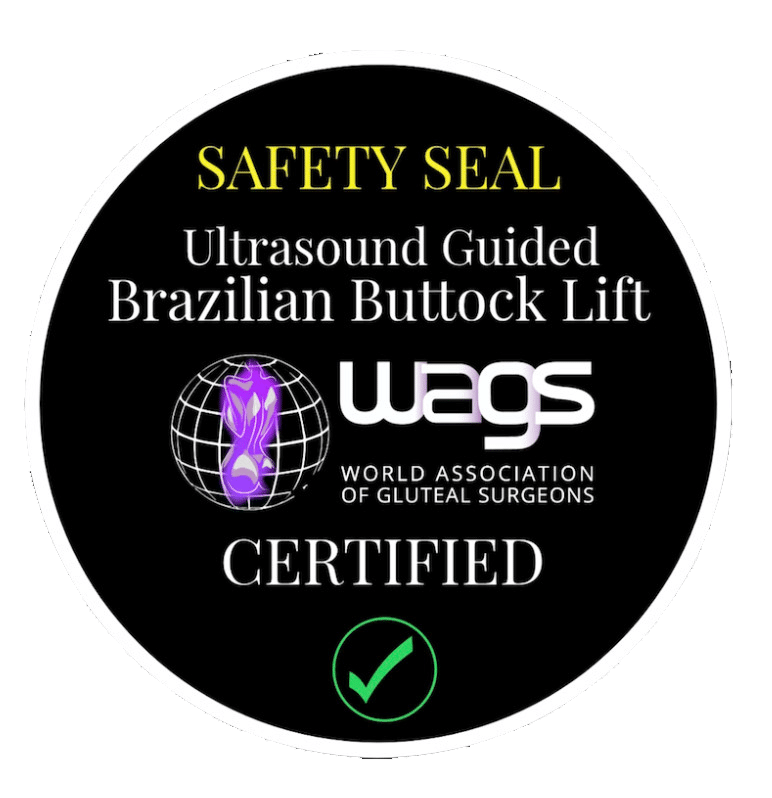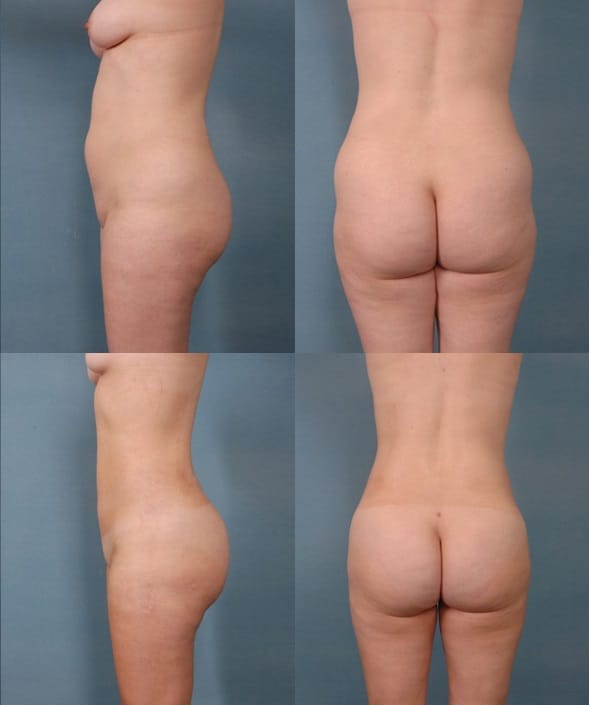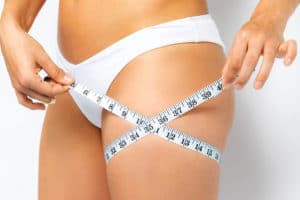*Individual results may vary
Restore volume and refine your contours using your body’s own fat for natural, lasting enhancement. Dr. Mark D. Epstein, a double board-certified plastic surgeon and Fellow of the American College of Surgeons, offers advanced fat transfer surgeries in Long Island and Suffolk County, NY.
Fat transfer, also known as fat grafting, is a body procedure that can enhance areas like the buttocks, hips, breasts, or face. With decades of experience and a commitment to precision and safety, Dr. Epstein delivers natural-looking results tailored to each patient’s aesthetic goals.
What is a Fat Transfer?
Fat transfer, also known as autologous (meaning from the patient’s own body) fat grafting, is a procedure where fat is removed from one part of the body and placed into another. The fat may be fat that would otherwise be discarded as a byproduct of liposuction to reduce the fat in one area of the body, or it may be fat that is harvested specifically for the purpose of transferring into another body area. It is really irrelevant why the fat was removed.

Fat Grafting Candidates

Buttock augmentation can enhance the natural curves for patients who are unhappy with the shape of their buttocks and hips. It can also add volume and roundness to a flat or small buttock for patients seeking a more balanced body profile. Bodybuilders may seek buttock augmentation if they are unable to develop gluteal muscles in proportion to the rest of their bodies. Generally, if you are looking for a fuller, curvier butt, buttock augmentation may be for you.
Fat Transfer To The Buttocks and Hips with Ultrasound Guided BBL
Fat transfer to the buttocks and hips is performed for two reasons:
- To increase the size of the buttocks and hips
- To improve the contour of this area
In my experience, approximately two-thirds of the fat I place is for improving contour, while the remaining one-third is for increasing size.
In males, I do not generally transfer fat to the hips because a little “indentation” there is considered masculine, but this same contour will not look good on a woman. For females who present to me for buttock enhancement, the most common shape of the buttocks that I see is rectangular, but A-frame and inverted-V are also seen. The goal is to produce a rounder or oval shape.
Another goal of surgery is to better separate the buttocks and hips from the lower back, flank, and thighs. For an example of what I am referring to, see below:

How is a Fat Grafting Procedure Performed?
During the fat transplantation procedure, fat is harvested from the donor area by inserting a cannula and suctioning out the fat, similar to liposuction. The most popular areas for liposuction before buttock augmentation are the lower back, waist, flanks (love handles), thighs, and stomach. The harvested fat is then purified so that only the fat cells are grafted.

Once the fat is ready to be placed, it is injected into the targeted area through a cannula until the desired appearance is achieved. This procedure is performed on an outpatient basis in your doctor’s office or a surgical facility. Because of the different aspects involved, treatment time can vary significantly depending on each patient’s individual procedure.
After the fat is harvested, the excess fluid is allowed to separate from the fat, leaving a more purified collection of fat. As the fat comes from the patient’s own body, allergic reactions and rejection are unlikely to occur. Although some of the fat may be absorbed by the body, the remaining fat is living tissue and will remain in the area.
The fat transfer procedure will work with any skin type. The degree of survival of the fat depends upon where the fat is being transferred to. The better the circulation to a given recipient site, the better the chance the fat has to survive – or, in other words, the greater percentage of the transferred fat will remain. Muscle has the best blood supply of all tissues, so injections of fat into muscle have the greatest survival (this is the case with fat transfer to the buttocks). Conversely, the skin has the least blood supply and scar tissue. This is why there is a lower percentage of fat survival when injected into the face.
How Many Fat Transfer Procedures Are Needed to Achieve the Desired Results?
You may accomplish your desired outcome with just one fat transfer procedure. This will depend on how much fat you have to harvest and the degree of enhancement you wish to achieve in the recipient site. The fat transfer procedure may also be combined with other techniques to create ideal contours from one area to another. Your consultation with Dr. Epstein will involve a thorough discussion of your ideal outcome and what it may take to achieve the curves that will enhance your shape.
How Long Does Fat Transfer Last?
It can take several months to see the final outcome of your fat transfer procedure. The majority of fat resorption is expected to occur in the first six weeks of recovery. Any changes that occur after that time should be minimal and should cease within six months of the surgery.
The fat that integrates into the recipient site lives on indefinitely because it has established a healthy blood supply. Like the fat cells that are native to the area that has been augmented, the transferred fat cells will be responsive to your overall weight. They can expand and shrink as a result of your diet and lifestyle habits, potentially affecting your body contours.
How Much Fat Will Be Needed for an Ultrasound Guided BBL?
The amount of fat used for a fat transfer is measured in cubic centimeters (cc). This measure describes the amount of volume that will be inserted into the target area. The number of ccs that Dr. Epstein will need to accomplish the objectives of surgery will be unique to your situation.
A fat transfer to augment the buttocks may need several hundred ccs of fat. Breast augmentation may require just a few hundred.
During your consultation, you can expect a thorough examination of the areas of your body that would be involved in your surgical process, as well as an in-depth discussion about your goals. With this, we can devise the most appropriate treatment plan for you and clearly explain what you can expect from your surgery.
BBL Fat Transfer
As I see it, a Brazilian Butt Lift (BBL) is an extension of a fat transfer to the buttocks and hips. Normally, when I approach the buttocks and hips as part of a more global rejuvenation of the trunk, such as when performing liposuction of the abdomen, flanks, back, arms, thighs (sometimes with an abdominoplasty or “tummy tuck” as well), I add fat to the hips and buttocks to round it out and add some volume where I believe it will be needed to achieve the most optimal aesthetic results.
In some cases, the patient desires a much larger buttock than what is usually done. This is called a Brazilian Butt Lift (BBL). In this case, the basic surgical principle is the same, except that a much larger quantity of fat is transferred to the buttocks. There is no set amount of fat required; this can be addressed during the consultation.
The video below discusses Brazilian Butt Lift:
BBL Fat Transfer Recovery
After a Brazilian butt lift with fat transfer, patients should avoid sitting directly on the buttocks or lying on their backs for two to three weeks to maximize results. During this time, patients may wear compression garments to reduce swelling. There will be some swelling and mild to moderate discomfort after the procedure. This depends upon where the fat is placed and how much is transferred there. Most patients return to work two weeks after their buttock augmentation and are able to resume all normal activities within four weeks.
How Long After a Buttock Augmentation with Fat Transfer Will I See My Results?
Swelling typically starts to resolve after a few weeks. By four to six months, the final results should be evident.
Butt Augmentation with Fat Transfer Results

You can see the results of several different fat transfer procedures in our photo gallery. When performed by an experienced surgeon using the proper techniques, buttock augmentation is a highly satisfying procedure that enhances the profile of the buttocks and surrounding areas for a younger, firmer, curvier look.
Fat Transplant Risks
While fat transplantation is safe for most patients, there are certain risks with any type of procedure. In the hands of an experienced surgeon, the incidence of these risks is quite low.
One very important safety concern is that when transferring fat to the buttocks, it is absolutely essential to inject the fat only into the subcutaneous fat layer under the skin. Injection into the buttock muscle can result in fat emboli (fat travelling into blood vessels to the heart and lungs), which can be life-threatening. There are very simple technical aspects to follow to avoid this from happening. Any surgeon experienced with fat transfer to the buttocks should be familiar with them.
Most of these risks are quite unusual, with the exception of under-correction, which is easily addressed at a second procedure if more fat needs to be transferred. These risks can be minimized by choosing an experienced board-certified plastic surgeon to perform your procedure, and following his/her instructions after surgery.
Ultrasound Guided Fat Transfer to the Buttocks
It has been determined that the dangers of fat transfer to the buttocks occur when the buttock muscles are penetrated by the cannula (tube) used to place the fat into the buttocks. Ideally, best results and 100% safety occur when the fat is placed into the buttock fat layer, NOT the underlying muscle.
Furthermore, the best results are obtained when the fat is placed in the deeper layer of buttock fat, not the superficial layer. Only ultrasound guidance can 100% assure that the fat is being safely placed into the correct fat layer in the buttocks. Dr. Epstein is a pioneer in this technique and was one of the very first so certified in this procedure by the World Association of Gluteal Surgeons.
Why Choose Dr. Mark D. Epstein?
Dr. Mark D. Epstein is a double board-certified plastic surgeon with a reputation for surgical precision and innovation. Recognized for his commitment to safety and aesthetic excellence, he is one of just a few U.S. surgeons certified in ultrasound-guided Brazilian Butt Lift (BBL) procedures by the World Association of Gluteal Surgeons (WAGS).
Dr. Epstein has successfully performed thousands of surgeries and developed his own techniques to maximize fat graft survival and minimize risk -- techniques that he now shares with other providers worldwide. With a focus on natural-looking outcomes and patient-centered treatment, he offers advanced fat transfer procedures in a fully accredited office-based surgical suite designed for comfort, privacy, and high standards of care.
FAQs
Will the Fat Move After It is Placed via Fat Transfer?
No. The fat that is naturally in an area of your body does not move. Likewise, the fat that we transfer to a localized area will remain in place permanently once it has established a consistent blood supply.
Does a Fat Transfer Require Anesthesia?
Small areas can be done under local anesthesia; larger areas are best done under intravenous sedation or general anesthesia. ProNox (“sweet air”) is very helpful to relax patients who undergo this procedure under local anesthesia.
What if I Lose or Gain Weight After a Fat Transfer Procedure?
Fat cells transferred during the procedure behave like the fat cells in the rest of your body. If you gain weight, these cells can expand, potentially increasing volume in the treated area. Conversely, if you lose weight, the transferred fat cells may shrink, leading to reduced fullness.
Modest weight fluctuations usually don’t significantly alter results. However, dramatic changes can affect the longevity and appearance of your outcome. Maintaining a stable weight after surgery helps preserve the results. Dr. Epstein encourages patients to adopt healthy lifestyle habits after surgery to maximize the benefits of their fat transfer procedure.
Is Fat Transfer Permanent, or Will I Need Touch-up Procedures?
Fat transfer offers long-lasting results, but not all of the transferred fat survives. Typically, about 60–80% of the fat remains, and the body absorbs the rest during the first few months.
The surviving fat becomes a natural part of the body and can last for many years, especially with good health and a stable weight. Some patients opt for a second round of fat transfer to enhance volume or refine their results.
Whether you’ll need a touch-up depends on your goals, the amount of fat initially transferred, and how your body responds during recovery. Dr. Epstein can guide this decision postoperatively.
How Do I Prepare for Fat Transfer?
To prepare for fat transfer, follow all preoperative instructions provided by Dr. Epstein’s office. These typically include:
- Stopping smoking
- Avoiding medications or supplements that increase bleeding risk (such as aspirin and fish oil)
- Completing lab work to ensure you’re a good candidate
- Arranging for post-op transportation
- Filling prescriptions ahead of time
- Purchasing compression garments
Staying hydrated, eating well, and maintaining a stable weight can also support healing. Dr. Epstein will provide detailed guidance during your consultation so you feel confident and ready for your procedure and recovery.
Can I Drive After a Fat Transfer Procedure?
You should not drive yourself home after a fat transfer procedure, especially if sedation or general anesthesia is used. Someone must accompany you and stay with you for the first 24 hours.
In the days that follow, your ability to drive will depend on the location of the fat transfer, your mobility, and whether you’re taking pain medications. If fat is transferred to the buttocks, you’ll need to avoid prolonged sitting, which can make driving difficult.
Most patients can resume driving within one to two weeks. Dr. Epstein will provide individualized advice based on your recovery progress.
Schedule a Fat Transfer Consultation on Long Island
Want to learn more about the fat transfer procedure? Contact us today at 631.689.1100 to schedule a consultation and find out whether or not this procedure is right for you.


